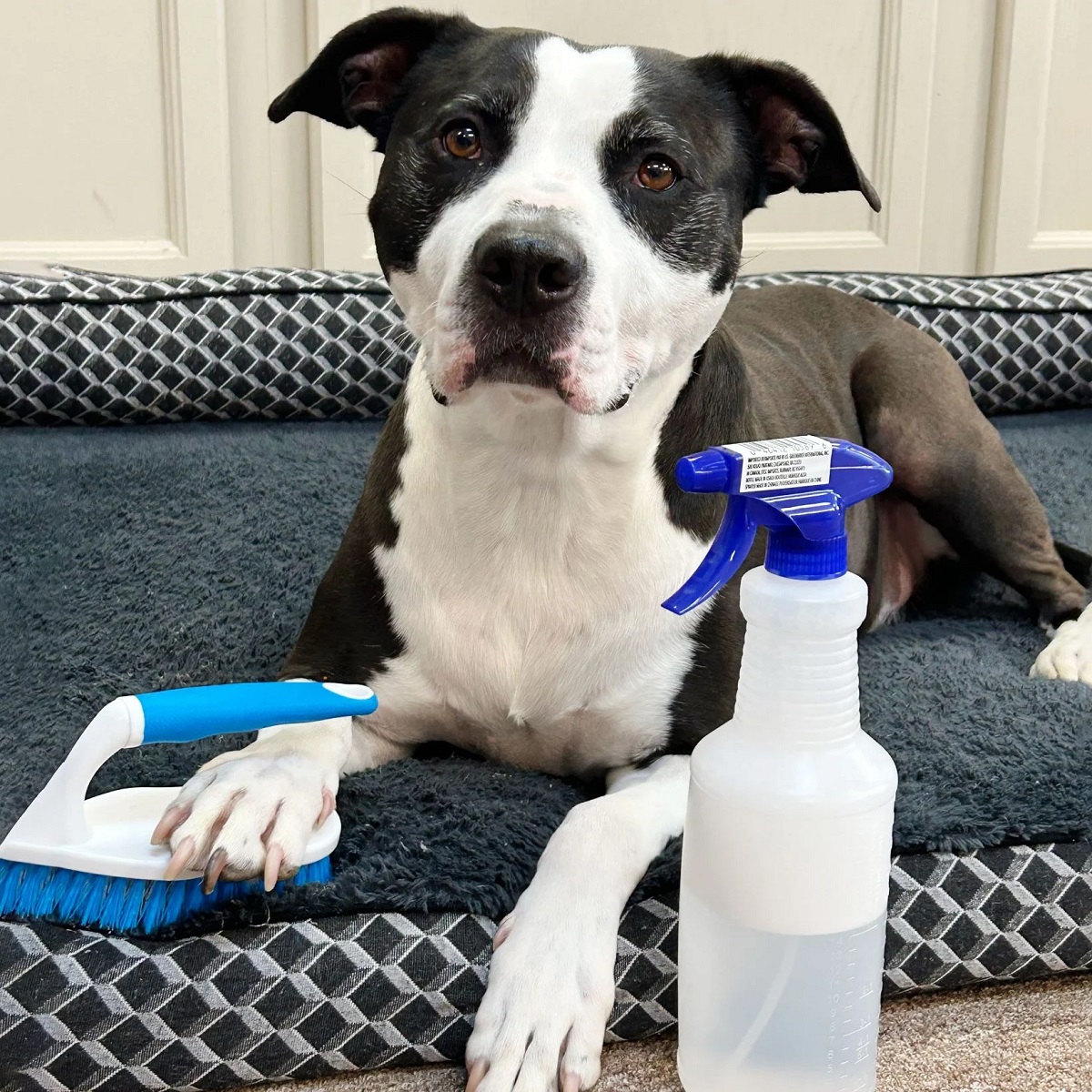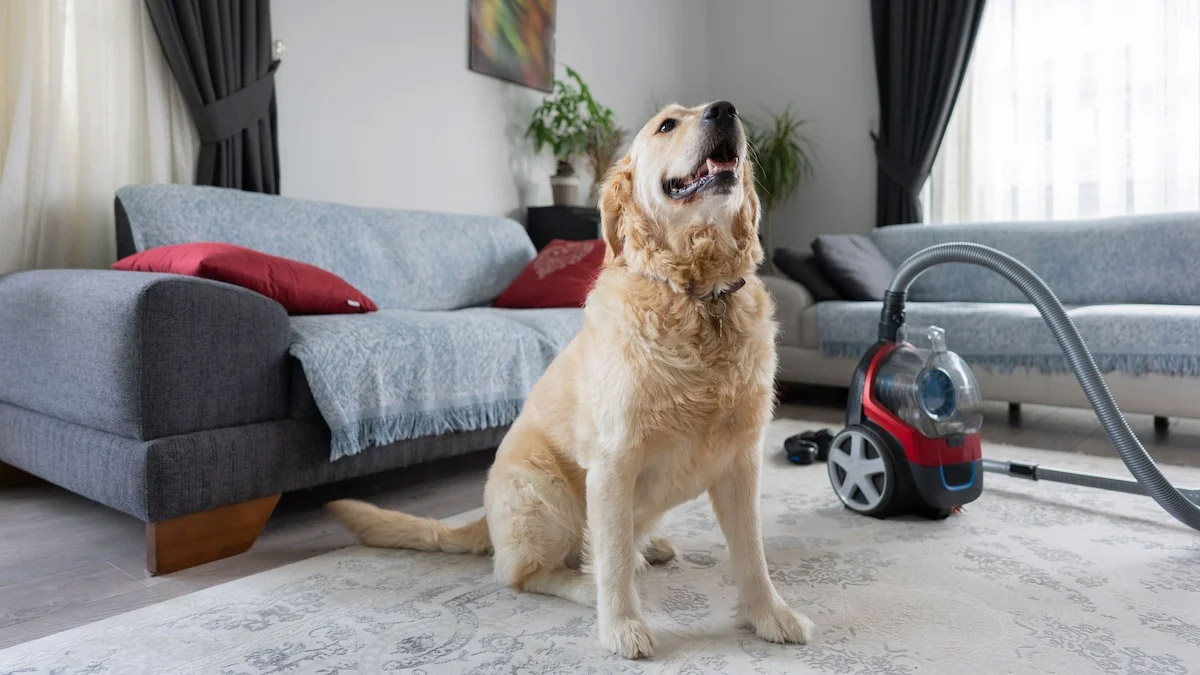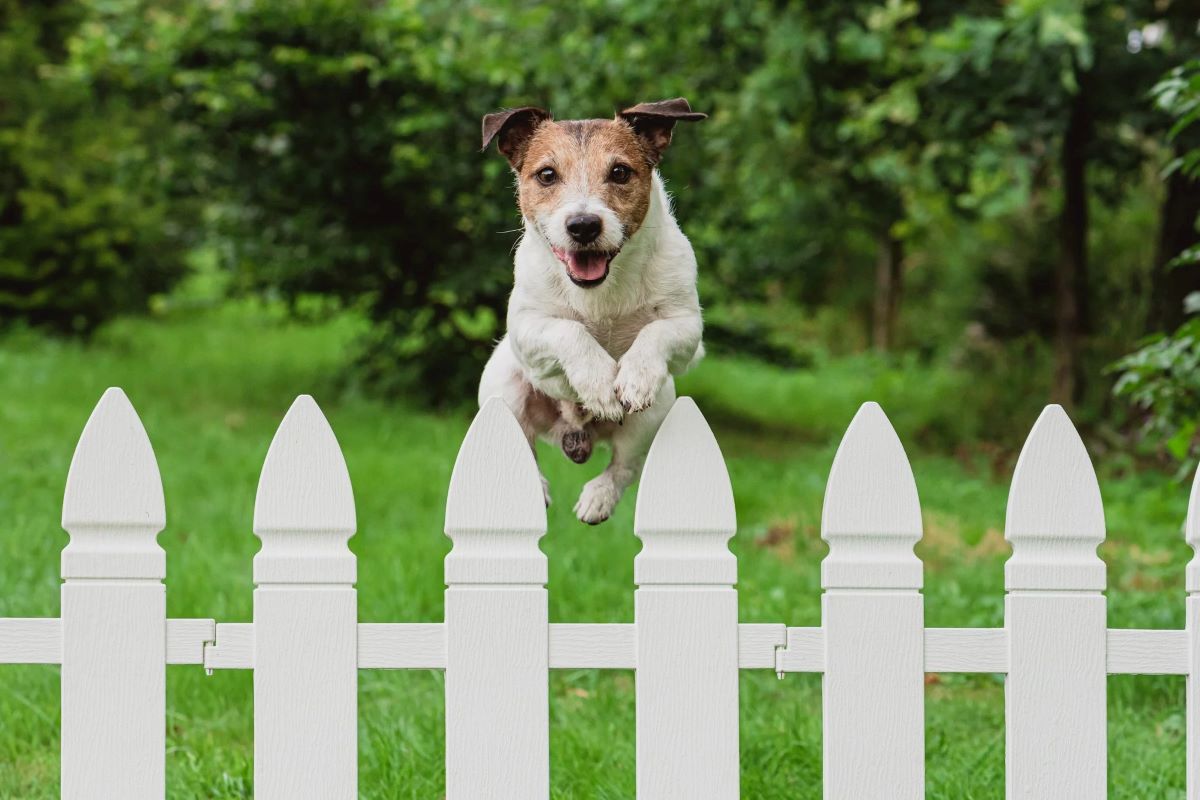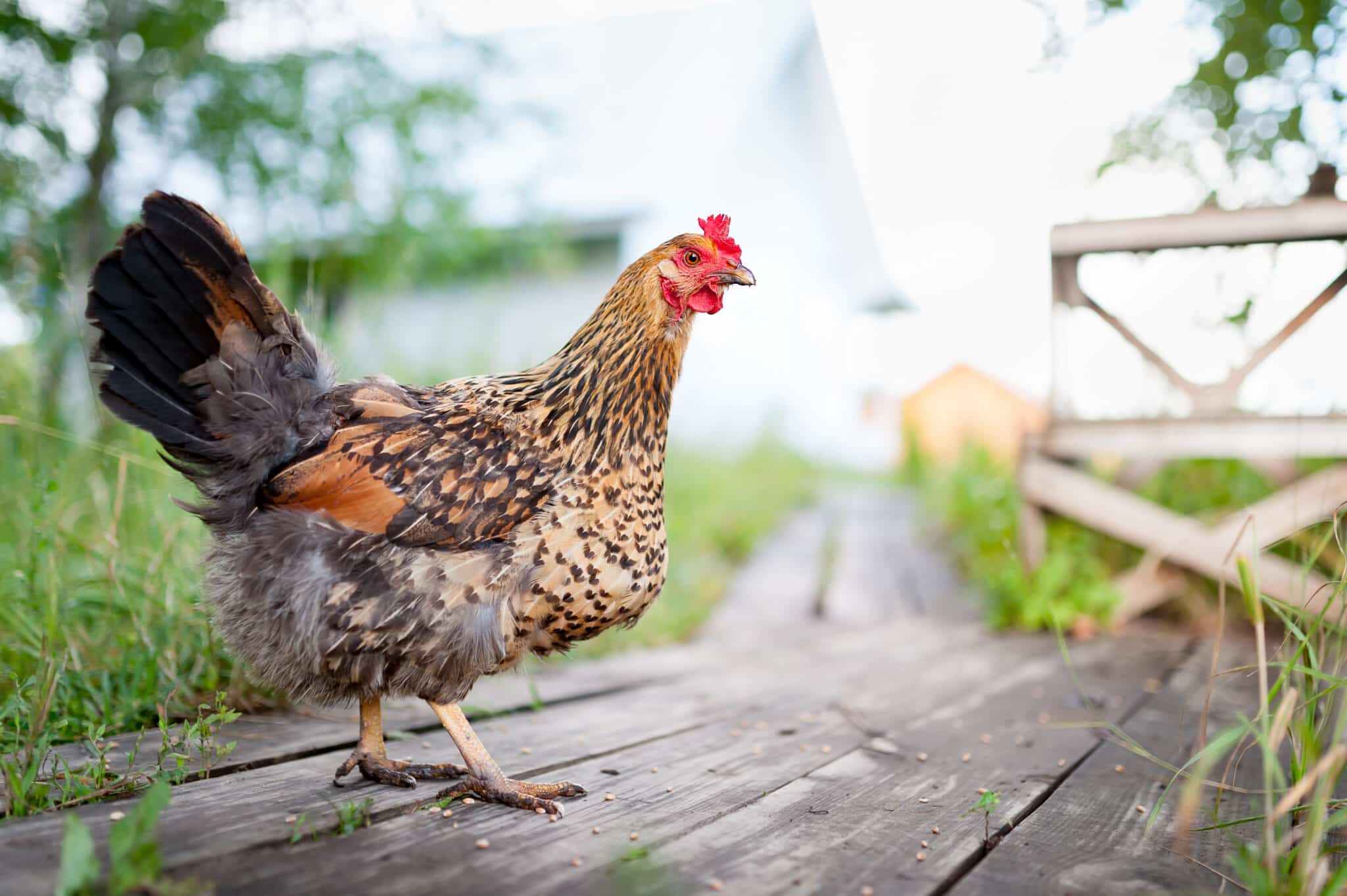Home>Furniture>Bedroom Furniture>How To Keep Dogs Off The Bed
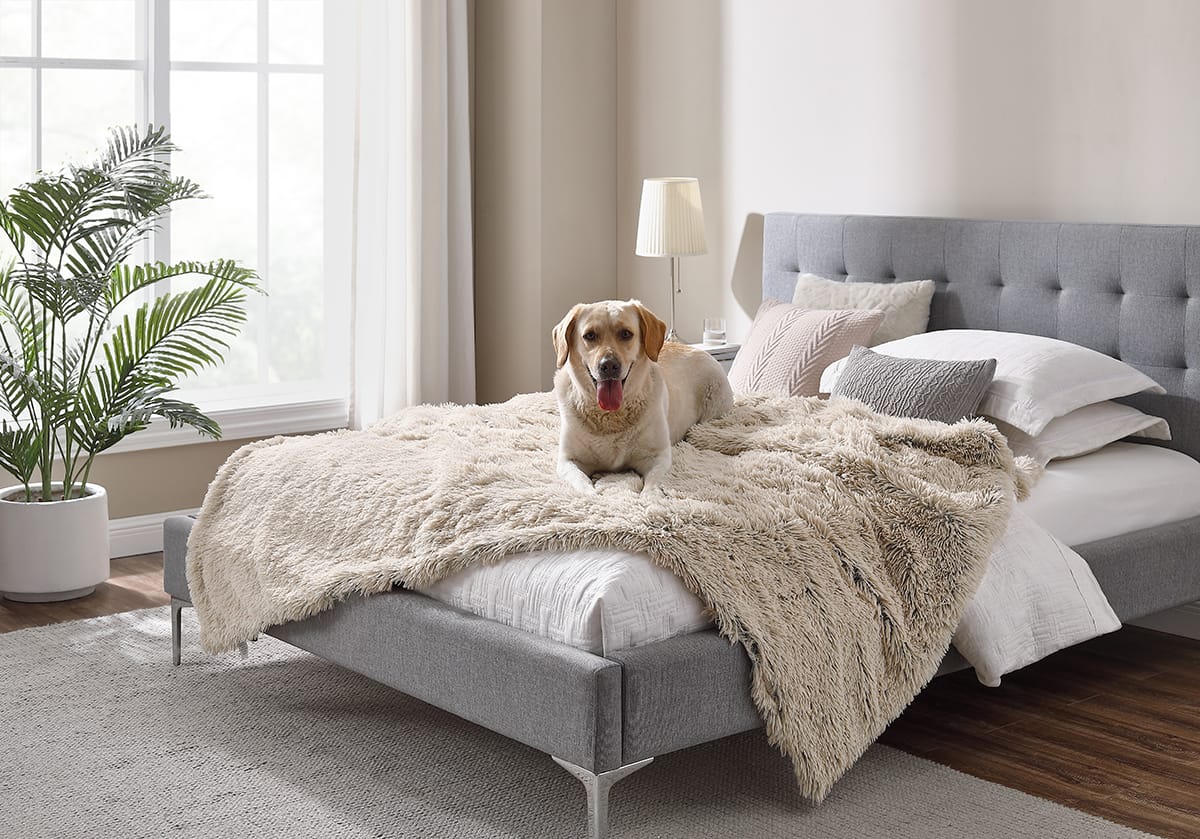

Bedroom Furniture
How To Keep Dogs Off The Bed
Modified: December 21, 2023
Discover effective methods on how to keep dogs off the bed with our expert tips and tricks. Create a peaceful bedroom environment with our tested bedroom furniture.
(Many of the links in this article redirect to a specific reviewed product. Your purchase of these products through affiliate links helps to generate commission for Storables.com, at no extra cost. Learn more)
Introduction
Welcome to our comprehensive guide on how to keep dogs off the bed. If you’re a dog owner, you may have experienced the alluring power that your furry friend possesses when it comes to snuggling up on your bed. While it can be quite tempting to let your dog share the sleeping space with you, there are several reasons why you may want to reconsider this habit.
In this article, we will explore the reasons why dogs are naturally drawn to the bed, the potential issues that can arise from allowing them on the bed, and the benefits of keeping them off. We will also provide you with practical strategies, training techniques, and alternative sleep solutions to help you establish and maintain boundaries that ensure a happy and healthy sleeping environment for both you and your beloved canine companion.
Before we dive into the details, it’s important to note that every dog is unique, and what works for one may not work for another. Therefore, it may require some trial and error to determine the most effective methods for keeping your dog off the bed.
Now, let’s delve into the reasons why dogs may have an irresistible urge to curl up on your comfy sleeping spot.
Key Takeaways:
- Establish clear rules, provide alternative sleeping areas, and use positive reinforcement to keep dogs off the bed. Consistency and patience are key in successfully implementing these strategies.
- By maintaining consistency and reinforcement, you can set your dog up for success and create a harmonious sleeping arrangement in your home.
Read more: How To Keep Dogs Off Porch
Why Dogs May Want to Sleep on the Bed
There are several reasons why dogs may have a strong desire to sleep on the bed, which can help us better understand their behavior. Here are a few possible explanations:
- Comfort and Security: Dogs are instinctively drawn to seek comfort and security, and your bed provides both. With soft bedding, your scent, and the warmth radiating from your body, your bed becomes an inviting and cozy spot for your dog to relax and feel safe.
- Bonding and Affection: Dogs are social animals and thrive on human companionship. Sleeping on the bed allows them to be close to you, reinforcing the bond between you and your furry friend. It provides a sense of comfort and the opportunity for physical affection during the night.
- Territorial Instincts: Dogs have a natural instinct to claim a space as their own. By sleeping on your bed, they may be marking it as their territory and establishing their place within the pack.
- Temperature Regulation: Dogs regulate their body temperature through their paws and by seeking out warm or cool surfaces. Your bed provides a comfortable and temperature-controlled environment, making it an attractive option for them to regulate their body temperature as they sleep.
While these reasons may explain why your dog wants to sleep on your bed, it’s important to evaluate the potential drawbacks and consider establishing boundaries to maintain a healthy and balanced living arrangement.
Now that we’ve explored why dogs may be inclined to share your sleeping space, let’s discuss the potential issues that can arise from allowing them on the bed.
Potential Issues with Allowing Dogs on the Bed
While it may seem harmless to let your dog sleep on the bed, there are a few potential issues that you should take into consideration:
- Hygiene Concerns: Dogs can bring dirt, allergens, and parasites into your bed, which can lead to health issues for both you and your pet. This can include fleas, ticks, dander, and even bacteria. Regular washing and cleaning of your bedding may help mitigate these risks, but it’s important to be aware of the potential hygiene concerns.
- Sleep Disturbance: Dogs have different sleep patterns than humans, and their movements, snoring, and even occasional accidents can disrupt your sleep. This can lead to fatigue, irritability, and overall poor sleep quality. It’s crucial to prioritize your sleep health and ensure a restful night’s sleep.
- Boundary Confusion: Allowing your dog on the bed may blur the lines of hierarchy and cause confusion regarding your pet’s place in the family. This can result in behavioral issues, including aggression and separation anxiety, as your dog may become overly dependent on being near you at all times.
- Possible Injury: Dogs may jump off the bed, especially if startled or during playtime, which can lead to injuries such as sprains or fractures. Smaller or older dogs are particularly susceptible to such accidents. Protecting their physical well-being should be a priority.
- Allergic Reactions: If you or someone in your household has allergies, allowing dogs on the bed can worsen symptoms. Pet allergens can accumulate in the bedding and exacerbate allergies, causing sneezing, itching, or respiratory issues.
Considering these potential issues, it’s essential to evaluate the impact on your sleep quality, hygiene standards, and the overall well-being of both you and your dog when deciding whether to allow them on the bed.
Next, let’s explore the benefits of creating boundaries and keeping your dog off the bed.
Benefits of Keeping Dogs Off the Bed
While it may be difficult to resist the adorable face of your dog begging to sleep on your bed, there are several benefits to consider when it comes to establishing boundaries and keeping them off the bed:
- Promotes Good Sleep Hygiene: By keeping your dog off the bed, you can maintain a cleaner and healthier sleep environment. This reduces the risk of allergens, parasites, and bacteria that can disrupt your sleep and potentially cause health issues.
- Improves Sleep Quality: With your dog on the bed, sleep disturbances such as snoring, movement, and accidents can disrupt your sleep. By keeping them off, you can enjoy a more restful and uninterrupted night’s sleep.
- Establishes Boundaries: Setting boundaries helps maintain a healthy hierarchy within your family pack. This can reduce behavioral issues, promote independence and confidence in your dog, and prevent overdependence and separation anxiety.
- Reduces Allergy Symptoms: If you or someone in your household suffers from allergies, keeping dogs off the bed can help minimize exposure to pet allergens. This can lead to a reduction in allergy symptoms and improved respiratory health.
- Promotes Independence: It’s important for dogs to have their own space and comfortable sleeping area. By providing alternative sleeping options, you encourage independence and allow your dog to feel secure and content in their designated spot.
By understanding and appreciating these benefits, you can make an informed decision about whether to allow your dog on the bed and take steps to establish healthy boundaries.
Now that we’ve explored the advantages of keeping dogs off the bed, let’s dive into some strategies and training techniques that can help you achieve this goal.
Strategies for Keeping Dogs Off the Bed
When it comes to keeping your dog off the bed, there are several strategies you can try. Remember, consistency and patience are key in successfully implementing these strategies:
- Establish Clear Rules: Clearly communicate to your dog that the bed is off-limits. Use consistent commands such as “off” or “bed” whenever they try to get on the bed, and reward them when they obey.
- Use Positive Reinforcement: Reward your dog with treats, praise, and affection when they follow the rules and stay off the bed. Positive reinforcement helps reinforce the desired behavior and encourages them to continue behaving appropriately.
- Be Firm and Consistent: If your dog attempts to get on the bed, firmly but gently redirect them to their own sleeping area. Consistency is crucial in establishing boundaries and sending a clear message.
- Invest in Crate Training: Crate training can provide your dog with a safe and comfortable sleeping space of their own. Gradually introduce your dog to the crate, using positive reinforcement and treats to create a positive association. This can be a great alternative to the bed.
- Use Visual and Physical Barriers: Consider using baby gates or door closures to restrict your dog’s access to your bedroom. This helps create a physical boundary and reinforces the idea that the bed is off-limits.
- Provide Alternative Comfortable Sleeping Areas: Give your dog comfortable and cozy alternatives to the bed, like a dog bed or a designated area with their favorite blanket and toys. Make sure this area is enticing and appealing to them.
Remember, every dog is different, and what works for one may not work for another. Experiment with these strategies and find the combination that is most effective for your dog’s temperament and preferences.
In addition to these strategies, consider using repellents and deterrents to further discourage your dog from getting on the bed. We will explore these options in the next section.
Now that you have some strategies to implement, let’s move on to learning about training techniques and providing alternative sleeping areas for your dog.
Read more: How To Keep Cat Off The Bed
Training Techniques to Discourage Dogs from Getting on the Bed
Training your dog to stay off the bed requires a combination of consistency, positive reinforcement, and patience. Here are some effective training techniques to help discourage your dog from getting on the bed:
- The “Off” Command: Teach your dog a specific command, such as “off” or “down,” to signal that they should get off the bed. Use this command consistently and reward them with treats and praise when they comply.
- Redirecting: If you catch your dog attempting to jump on the bed, redirect their attention to an appropriate behavior or an alternative sleeping area. Use treats and positive reinforcement to reward them for choosing the desired behavior.
- Consistent Reinforcement: Every time your dog attempts to get on the bed, redirect them using the “off” command. Be consistent in your response to help them understand that the bed is off-limits.
- Aversion Training: Consider using harmless deterrents, such as aluminum foil or double-sided tape, on the bed to create an unpleasant texture or sound that your dog dislikes. Dogs generally avoid surfaces that feel uncomfortable or make noise.
- Timing and Monitoring: It’s crucial to catch your dog in the act of attempting to get on the bed and correct the behavior immediately. Timing is key in helping them make the connection between the behavior and the consequence.
- Positive Reinforcement: Lavish your dog with praise, treats, and rewards when they choose to stay off the bed or use their designated sleeping area. Positive reinforcement strengthens the desired behavior and encourages them to repeat it.
Consistency and patience are essential in the training process. It may take time for your dog to fully understand and adhere to the rules, so be prepared for some setbacks along the way. Remain consistent with your training techniques and provide plenty of positive reinforcement to set your dog up for success.
In the next section, we will discuss the importance of providing alternative comfortable sleeping areas for your dog to encourage them to stay off the bed.
With the right training techniques and a bit of dedication, you can successfully keep your dog off the bed and establish healthy boundaries within your household.
To keep dogs off the bed, provide a comfortable alternative sleeping area such as a dog bed or crate, and consistently reinforce the rule with positive reinforcement and redirection.
Providing Alternative Comfortable Sleeping Areas for Dogs
To effectively keep your dog off the bed, it’s crucial to offer them appealing and comfortable alternatives for their sleeping needs. Here are some tips for providing alternative sleeping areas:
- Invest in a Quality Dog Bed: Choose a dog bed that suits your dog’s size, breed, and sleeping preferences. Look for a bed with supportive padding and a washable cover for easy maintenance.
- Consider Orthopedic Options: Older dogs or those with joint issues may benefit from orthopedic dog beds that provide additional support and comfort.
- Create a Cozy Nook: Set up a designated area in your home where your dog can have their own space to relax and sleep comfortably. Include soft bedding, blankets, and toys to make it inviting.
- Provide a Warmth Source: Dogs enjoy warmth, especially during colder months. Consider placing a heated bed or a microwavable heating pad in their designated sleeping area to keep them cozy.
- Keep the Sleeping Area Quiet: Ensure that the alternative sleeping area is in a quiet corner or room where your dog can have some peace and solitude. This will encourage them to choose their own sleeping spot over the bed.
- Add Familiar Scents: Place an item with your scent, such as an unwashed t-shirt or a blanket with your scent, in their sleeping area. This can provide a sense of comfort and familiarity, making it more enticing for them to choose that spot over the bed.
Remember to introduce the alternative sleeping area gradually and make it a positive experience for your dog. Encourage them to explore and use the new space by offering treats, praise, and rewards when they choose their designated sleeping area.
In addition to these tips, make sure to keep the alternative sleeping area clean, regularly wash the bedding, and periodically inspect it for any wear and tear. A comfortable and appealing sleeping area will greatly increase the chances of your dog opting for their own spot instead of your bed.
In the next section, we will discuss the use of boundaries, gates, and deterrents to reinforce the message that the bed is off-limits.
By providing alternative comfortable sleeping areas, you can redirect your dog’s attention and give them a cozy space they will love while keeping them off the bed.
Creating Boundaries Using Gates or Door Closures
Creating physical boundaries can be an effective way to keep your dog out of certain areas, including your bedroom and the bed. Here are some tips for using gates or door closures to establish boundaries:
- Select the Right Type of Gate: Choose a gate that is appropriate for your dog’s size and breed. There are a variety of options available, including pressure-mounted gates, hardware-mounted gates, and freestanding gates. Consider the specific needs of your home and your dog when selecting a gate.
- Install the Gate Properly: Follow the manufacturer’s instructions to properly install the gate. Make sure it is securely fastened, providing a stable barrier that your dog cannot easily knock down or bypass.
- Block Access to the Bedroom: Position the gate in the doorway of your bedroom to physically prevent your dog from entering. This helps establish clear boundaries and reinforces the message that the bedroom and the bed are off-limits.
- Gate Training: Train your dog to respect the gate by guiding them away from it whenever they attempt to jump over or push through. Use treats and positive reinforcement to reward them for staying on the desired side of the gate.
- Gradual Introductions: If your dog is unfamiliar with gates, introduce them gradually. Start by leaving the gate open and allowing your dog to explore the restricted area. Slowly close the gate for short periods, gradually increasing the duration until they become accustomed to the boundary.
- Consistency and Reinforcement: Consistently apply the gate as a physical barrier to reinforce the boundary. Over time, your dog will learn to associate the closed gate with restricted access to certain areas.
Remember to provide your dog with alternative comfortable sleeping areas outside of the restricted area. This will ensure they have their own space where they can rest comfortably.
Creating boundaries using gates or door closures is an effective way to physically separate your dog from the bedroom and the bed. It helps establish clear boundaries and reinforces the training and training techniques you have implemented.
Next, we will discuss the use of repellents and deterrents to further discourage your dog from attempting to get on the bed.
By utilizing gates or door closures, you can create a physical barrier that signals to your dog that the bedroom and the bed are off-limits, redirecting them to their designated sleeping area.
Using Repellents and Deterrents to Keep Dogs Off the Bed
If your dog is persistent in trying to get on the bed, using repellents and deterrents can be an effective strategy to discourage them. Here are some options to consider:
- Bitter Sprays: Apply a bitter-tasting spray on the edges of the bed or areas where your dog tends to jump up. The unpleasant taste will deter them from getting on the bed.
- Non-toxic Pet Repellent Sprays: There are pet-safe repellent sprays available that use natural ingredients to create an unpleasant scent for dogs. Apply these sprays on the bed or around the sleeping area to discourage your dog from approaching.
- Ultrasonic Devices: Ultrasonic devices emit a high-frequency sound that humans cannot hear, but dogs find uncomfortable or irritating. Place one near the bed to discourage your dog from getting too close.
- Aluminum foil or Double-sided Tape: Dogs dislike the texture and sound of aluminum foil or double-sided tape. Cover the bed with these materials when you’re not using it to make it unappealing for your dog.
- Booby Traps: Set up harmless booby traps using noise-making devices or motion-activated sprayers. When your dog attempts to jump on the bed, the unexpected noise or spray will startle them and discourage the behavior.
- Remote Training Tools: Remote training tools, such as vibration collars or handheld devices that emit sounds, can be used to interrupt your dog’s behavior when they try to get on the bed. Be sure to follow the instructions and use them with caution.
It’s important to note that while repellents and deterrents can be effective, they are not a substitute for training and positive reinforcement. Consistent and patient training, along with the use of these tools, will yield better results in keeping your dog off the bed.
Always prioritize your dog’s safety and well-being when using repellents or deterrents. Ensure that the products you choose are pet-safe and non-toxic.
In the next section, we will emphasize the importance of maintaining consistency and reinforcement throughout the training process to achieve long-term success.
By using repellents and deterrents, you can create an environment that discourages your dog from getting on the bed, helping to establish and reinforce the desired boundaries.
Read more: How To Keep Dogs Off Grass Seed
Maintaining Consistency and Reinforcement in the Training Process
Consistency and reinforcement are crucial elements in successfully keeping your dog off the bed. By maintaining a consistent training approach and providing continual reinforcement, you will help solidify the desired behavior. Here are some tips to help you stay consistent throughout the training process:
- Establish Clear Rules and Stick to Them: Clearly communicate the rules regarding the bed and consistently enforce them. Make sure everyone in your household is on the same page and understands the boundaries that have been set.
- Use Consistent Commands: Choose a specific command, such as “off” or “bed,” to signal that your dog should stay off the bed. Use the same command consistently and reinforce it with positive reinforcement when your dog obeys.
- Be Patient and Persistent: Training takes time, and your dog may not immediately understand or follow the rules. Stay patient and persistent in your efforts, consistently redirecting your dog and reinforcing the desired behavior.
- Consistently Enforce Boundaries: It’s important to consistently enforce the boundaries you have set. If your dog attempts to get on the bed, redirect them to their own sleeping area and reward them when they comply.
- Positive Reinforcement: Use positive reinforcement techniques such as treats, praise, and affection to reward your dog for staying off the bed and choosing their designated sleeping area. This will reinforce the desired behavior and make them more likely to repeat it in the future.
- Practice Regular Training Sessions: Set aside regular training sessions to reinforce the commands and boundaries. Consistency is key, so be sure to consistently practice and reinforce the rules with your dog.
- Involve the Whole Family: Ensure that everyone in your household follows the same training approach and consistently reinforces the rules. Inconsistent enforcement may confuse your dog and hinder their progress.
Remember that each dog is unique, and it may take time for your dog to fully understand and adhere to the training. Stay patient, remain consistent, and adapt your approach as needed to accommodate your dog’s individual needs and personality.
Consistency and reinforcement are essential in maintaining a well-trained dog who understands and respects the boundaries you have established regarding the bed.
In the final section, we will summarize the key points discussed in this article and conclude our comprehensive guide on keeping dogs off the bed.
By maintaining consistency and reinforcement, you can set your dog up for success and create a harmonious sleeping arrangement in your home.
Conclusion
Keeping dogs off the bed requires a combination of training techniques, strategies, and reinforcement. While it may be tempting to let your furry friend snuggle up on the bed, there are several reasons why it’s beneficial to establish boundaries and provide alternative sleeping areas for them.
We discussed the reasons why dogs may want to sleep on the bed, including their instinctual need for comfort, security, and bonding with their owners. However, allowing dogs on the bed can pose potential issues such as hygiene concerns, sleep disturbances, and boundary confusion.
By keeping dogs off the bed, you can enjoy improved sleep hygiene, enhanced sleep quality, and a clearer hierarchy within your family. Additionally, it can help reduce allergic reactions, potential injuries, and dependence on your constant presence.
We explored various strategies for keeping dogs off the bed, such as establishing clear rules, positive reinforcement, and the use of gates or door closures. Creating alternative comfortable sleeping areas and using repellents or deterrents can further discourage your dog from getting on the bed.
Consistency and reinforcement are vital throughout the training process. By following these training techniques and consistently enforcing the established boundaries, you can successfully keep your dog off the bed and maintain a healthy and balanced living environment.
Remember, every dog is unique, and what works for one may not work for another. It’s important to be patient, flexible, and willing to adapt your approach to suit your dog’s individual needs and behavior.
By taking the time to establish boundaries and provide comfortable alternatives, you can create a harmonious sleeping arrangement that benefits both you and your furry companion.
So, take a proactive approach, implement the strategies mentioned in this guide, and enjoy a restful night’s sleep while keeping your dog content in their designated sleeping area.
Happy sleeping!
Frequently Asked Questions about How To Keep Dogs Off The Bed
Was this page helpful?
At Storables.com, we guarantee accurate and reliable information. Our content, validated by Expert Board Contributors, is crafted following stringent Editorial Policies. We're committed to providing you with well-researched, expert-backed insights for all your informational needs.



